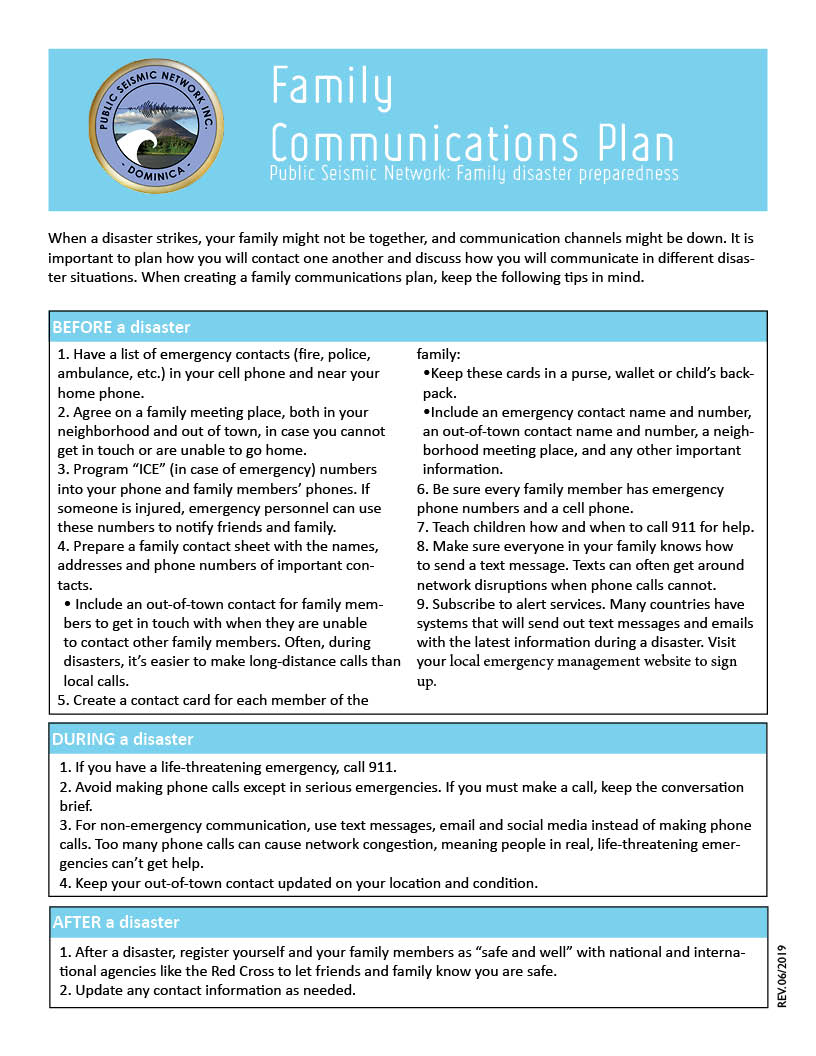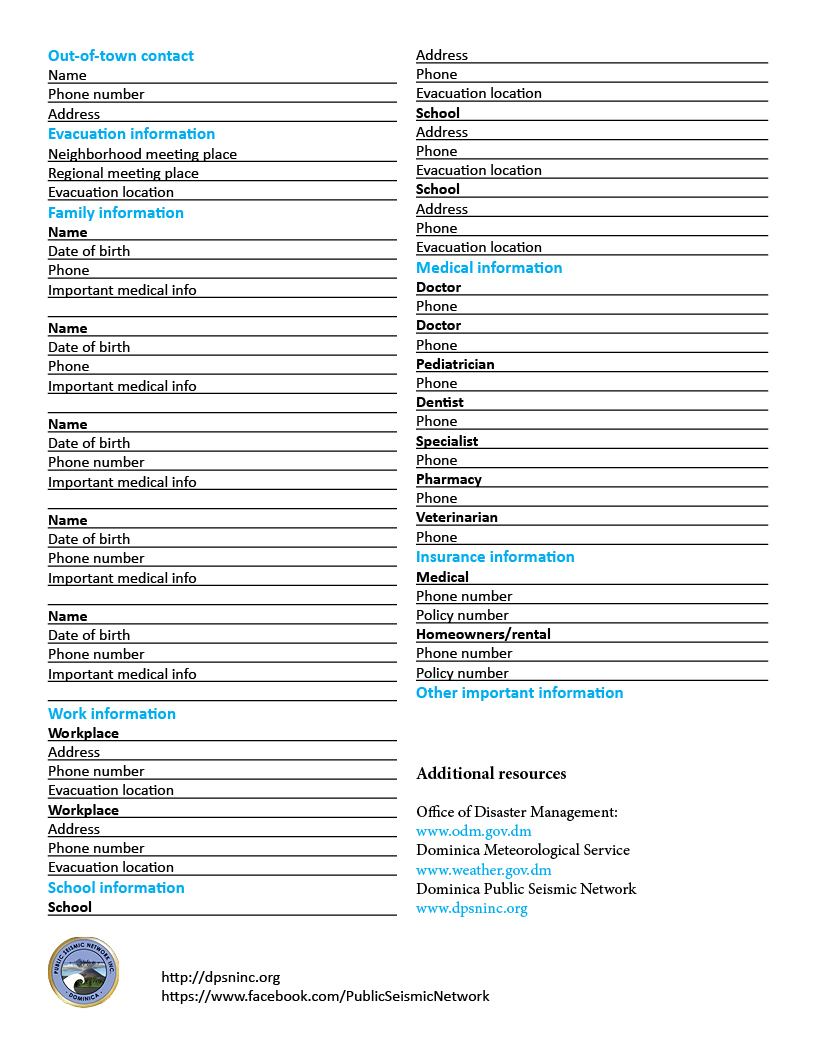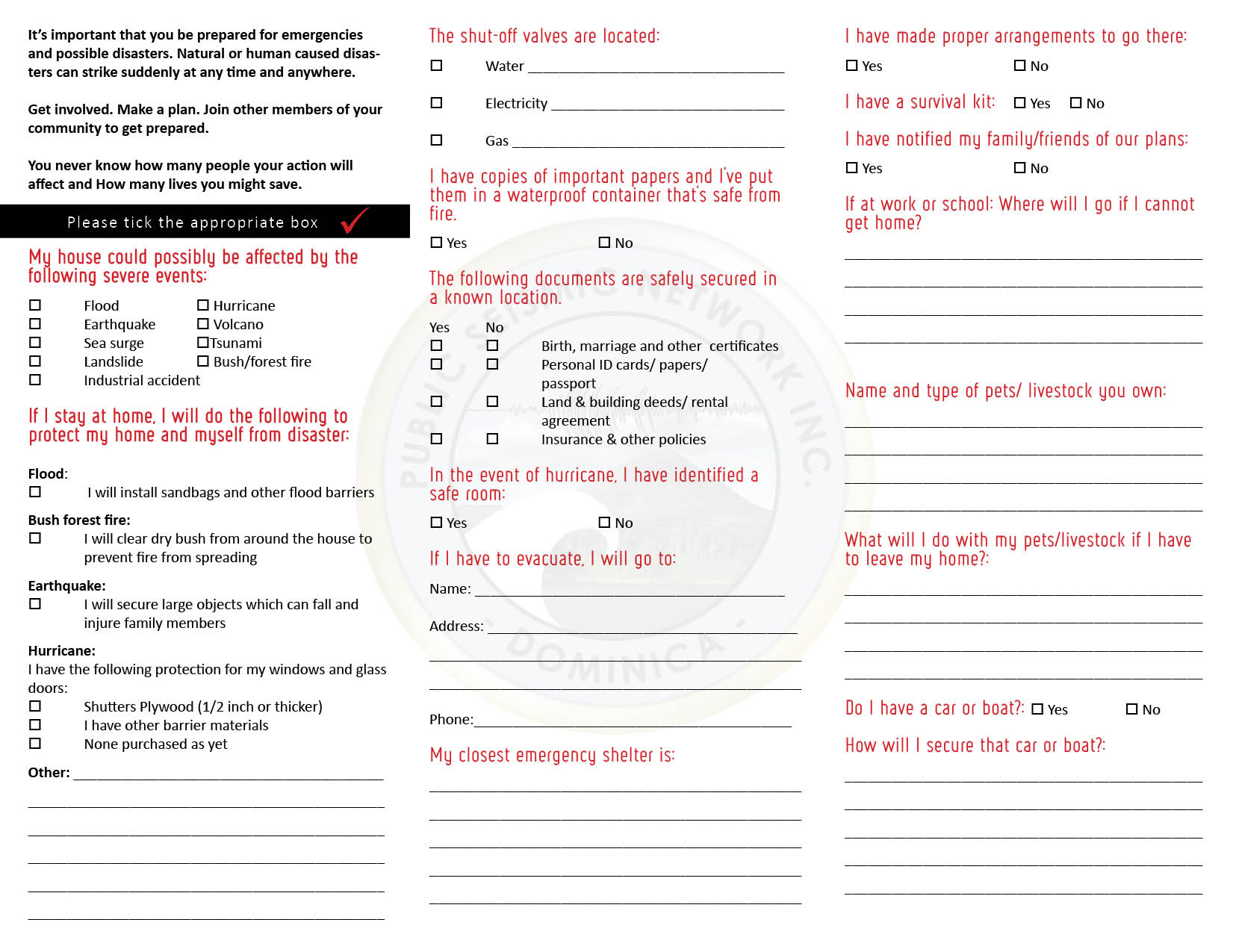Menu
What Do You Need In A Disaster Supply Kit?
At a minimum, you should have the basic supplies listed below:
Food: non-perishable, easy-to-prepare items (3-day supply for evacuation, 2-week supply for home).
Battery/solar-powered or hand-crank radio
Extra batteries
Medications (7-day supply) and medical items
Multi-purpose tool
Sanitation and personal hygiene items
Copies of personal documents (medication list and pertinent medical information, proof of address, deed/lease to home, passports, birth certificates, insurance policies)
Cell phone with chargers
Family and emergency contact information
Extra cash
Map(s) of the area
Consider the needs of all family members and add supplies to your kit:
-
Medical supplies (hearing aids with extra batteries, glasses, contact lenses, syringes, etc)
-
-
-
-
-
-
-
-
Baby supplies (bottles, formula, baby food, diapers)
-
-
-
-
-
-
-
-
-
-
-
-
-
-
-
Games and activities for children
-
-
-
-
-
-
-
-
-
-
-
-
-
-
-
Pet supplies (collar, leash, ID, food, carrier, bowl)
-
-
-
-
-
-
-
-
-
-
-
-
-
-
-
Two-way radios
-
-
-
-
-
-
-
-
-
-
-
-
-
-
-
Extra set of car keys and house keys
-
-
-
-
-
-
-
-
-
-
-
-
-
-
-
Manual can opener
-
-
-
-
-
-
-
Additional supplies to keep at home or in your survival kit based on the types of disasters common to your area:
-
Whistle
-
N95 or surgical masks
-
Matches
-
Rain gear
-
Towels
-
Work gloves
-
Tools/supplies for securing your home
-
Extra clothing, hat and sturdy shoes
-
Plastic sheeting
-
Duct tape
-
Scissors
-
Household liquid bleach
-
Entertainment items
-
Blankets or sleeping bags
Family Communications Plan
When a disaster strikes, your family might not be together, and communication channels might be down.
It is important to plan how you will contact one another and discuss how you will communicate in different disaster situations.
Update as changes occur.
Here is a copy of our Family Communications Plan. Print a copy (back and front) and use it as a template for creating your own family plan.
Family Disaster Plan
Disasters can strike at any moment, with little notice.
In order to protect your home and family, it is important to be prepared and have a plan in place. The family preparedness plan contains four steps that families should take to be ready for any disaster.
Identify hazards
Identify what types of disasters are most likely to happen in your area, and learn about how to prepare for each.
Learn about your community’s warning system and signals (sirens, text messages, etc.).
Identify local organizations that perform emergency management (Red Cross, disaster committees, nonprofits, etc.) and know how to contact them.
Educate yourself on any disaster plans in place at your workplace, children’s school or other places you and your family spend time.
Hold a family meeting
Meet with your family to discuss why it is important to be prepared.
Review the types of disasters that are most likely to occur, and explain what to do in each situation.
Assign responsibilities to each family member, and plan to work together as a team.
Decide on locations where you will meet in case a disaster strikes:
Outside your home and neighbourhood in case of a sudden emergency, such as an earthquake, tsunami or fire.
Outside your city, village or town in case you cannot return home.
Discuss what to do in an evacuation and create a family evacuation plan.
If a family member is frequently away from home, plan how you will respond if he or she is away when a disaster strikes.
Document how your family will communicate if a disaster strikes, and create a family communications plan.
If anyone in your family has a disability or special needs, adjust your plan accordingly.
Be sure to include your family pets in your plan.
Prepare
Assemble a disaster supply kit.
Locate safe places in your home for each type of disaster.
Determine the best evacuation routes from your home.
Become trained in first aid and CPR.
Show each family member how and where to shut off utilities (water, gas, electricity).
Make a complete inventory of your home and property.
Teach each family member how to use a fire extinguisher and where to find one.
Post emergency contacts (friends, family, neighbours, police, fire, etc.) on the refrigerator.
Practice your plan
Practice your plan with your family on a regular basis (every six months).
Check your disaster supply kit every three months.
Replace stored water and food every three months.
Update any emergency contact info as changes occur.
Here is a copy of our Family Emergency/Disaster Plan. Print a copy (back and front) and use it as a template for creating your own family plan.




